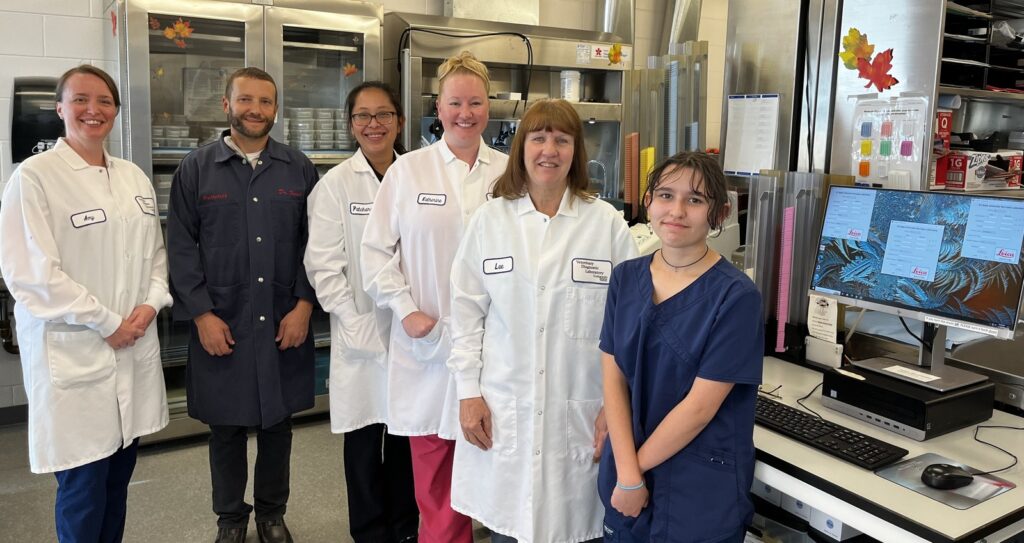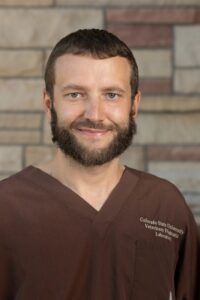
The Tissue Trimming Lab in Clinical Diagnostics plays a critical role in veterinary care, although the team may never see the patient, there is a history submitted with each case that creates a connection.
“My favorite part of the job is reviewing the patient histories and then learning about the diagnosis,” said Lee DeBuse, Tissue Trimming Laboratory manager.
The lab primarily handles surgical biopsies which, most often, have a veterinary care team and anxious owner waiting for results. The team also works with necropsy specimens to provide closure to owners or information on herd health. With that in mind, service excellence is critical, providing quick and accurate findings.
“We’re the go-between what came off of animal and what the pathologist needs to diagnose or let the surgeon know if they got clean margins,” said Amy Rich, Tissue Trimming technician.
The team includes DeBuse, Tissue Trimming technicians Katherine McMurdo, Amy Rich, Patchara Limhapirom, students Isabella Jiricka and Wynne Waggoner, and section head Dr. Chad Frank. Together, they process nearly 140 cases daily from labs worldwide (including about six cases per day from the Veterinary Teaching Hospital).
To facilitate the work of pathologists, the team prepares tissues, records notes, incorporates images of specimens with the PAX-It gross imaging system and assigns them to the appropriate pathologist. The team trims the tissues using various methods to provide the pathologist with the best possible sections for case evaluation.
Pathologists viewing the samples diagnose a wide variety of diseases.
“They have expertise in picking up a sample and knowing what to do, what the pathologist will need,” said Frank.
“Nine times out of ten, there’s a patient on the other end, and information is critical to them,” said McMurdo. “Knowing that I’m helping animals and owners even though I’m not working directly with them is the best part of my job.”
International reputation
Their dedication and expertise have earned the team a highly respected reputation in the international pathology field. In fact, auditors touring the lab during the recent American Association of Veterinary Laboratory Diagnosticians accreditation visit were impressed with the lab’s technology and the way the team functions independently to disarticulate samples without pathologist assistance in most cases.
“Visitors, auditors, and pathologists from other labs are always impressed with the space and what we do,” said McMurdo.
DeBuse credits teamwork and cross-training for their success. “I know this team can handle anything that comes in that day. Though it’s never predictable, I know we can rely on each other to get the job done. And done well.”

The team’s willingness to share their expertise also stands out. Frank highlights the team’s role in the training of residents.
“First-year residents spend six months working with the team. They teach them how to trim, what to look for, and pass along their expertise,” Frank said.
They also coach rDVMs and clinical staff on how to provide samples to the Veterinary Diagnostic Laboratory. Shared information ranges from how to ship a sample, to what charges will be applied and can a histopathology sample be run as a STAT.
“The Tissue Trimming group is an integral part of the pathology team in general,” said Frank. “We can’t do our jobs without them.”